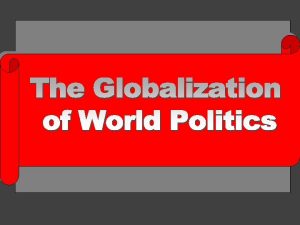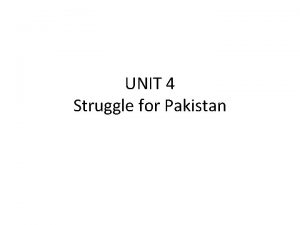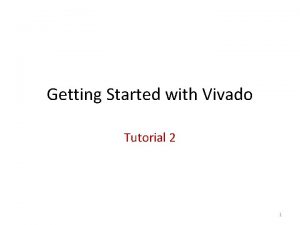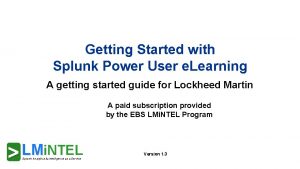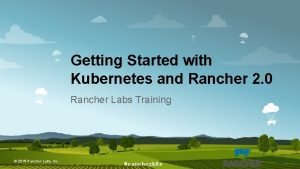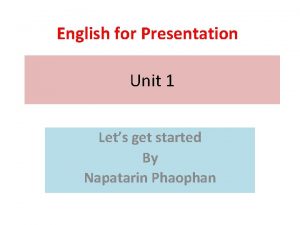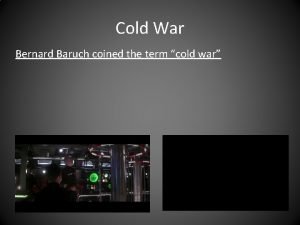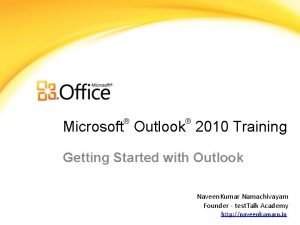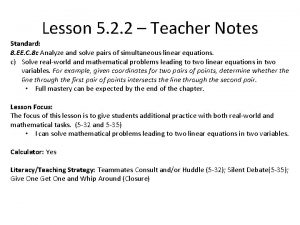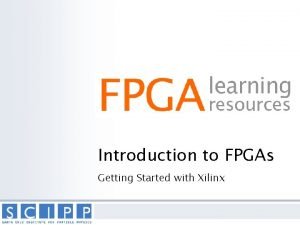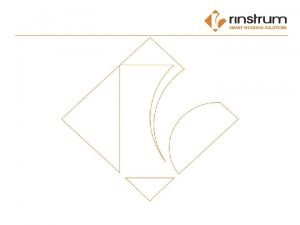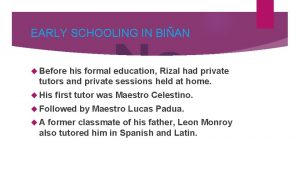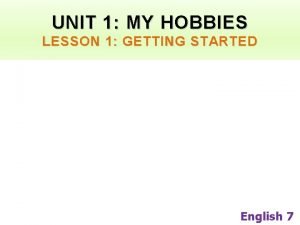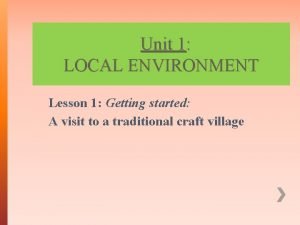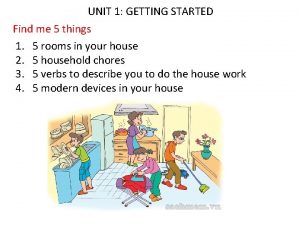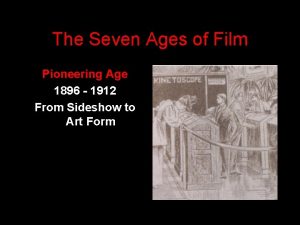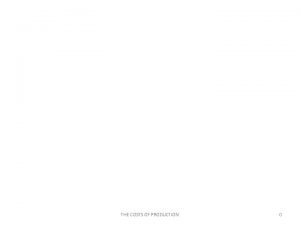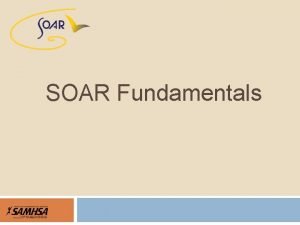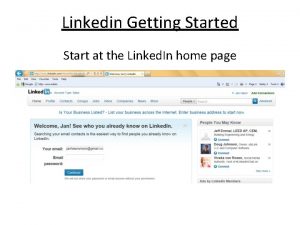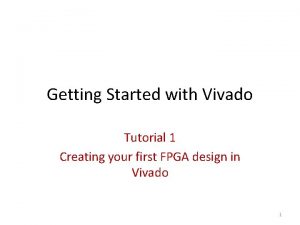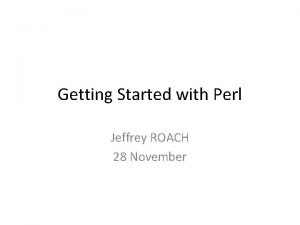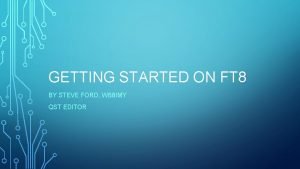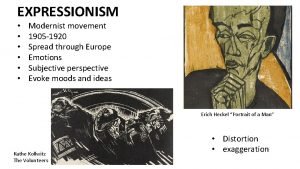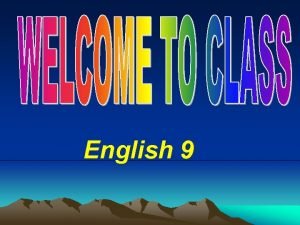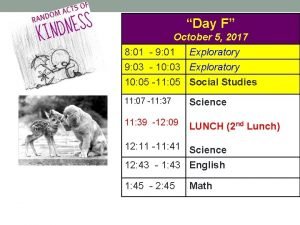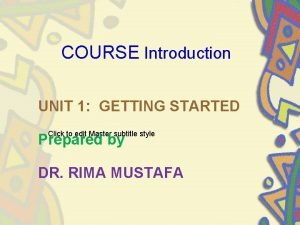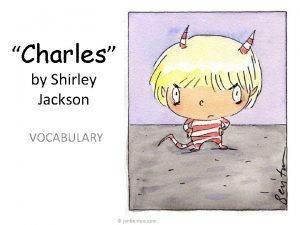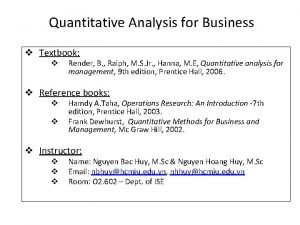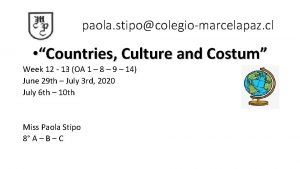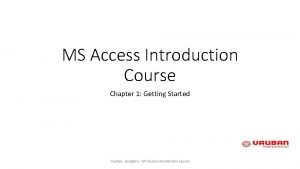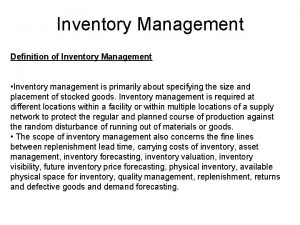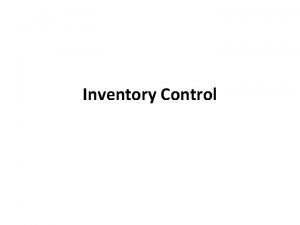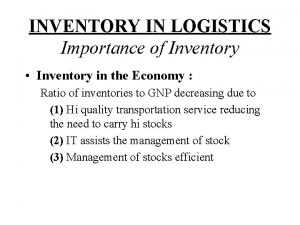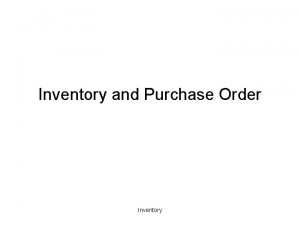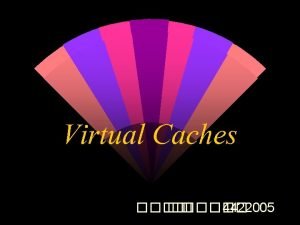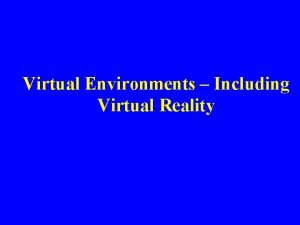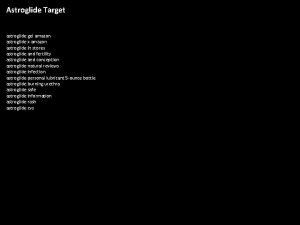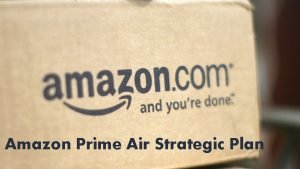Inventory Management Amazon com started as a virtual















































- Slides: 47

Inventory Management

Amazon. com started as a “virtual” retailer – no inventory, no warehouses, no overhead; just computers taking orders to be filled by others Growth has forced Amazon. com to become a world leader in warehousing and inventory management

What Is Inventory? Stock of items kept to meet future demand Working Capital Def. - A physical resource that a firm holds in stock with the intent of selling it or transforming it into a more valuable state.

Inventory by Nature of Material Raw Materials Works-in-Process Finished Goods Maintenance, Repair and Operating (MRO)

Inventory by Uses of Material Transaction Inventory Speculative Inventory Precautionary Inventory

Functional Classification Of Inventory Based on utility, all inventory can be in one or more of the following categories Working stock Safety stock Anticipation stock Pipeline stock Decoupling stock Psychic stock

Cost of Inventory

1. Ordering /Procurement cost Cost of replenishing inventory Order processing Shipping Handling

2. Carrying Costs Cost of holding an item in inventory Working Capital (opportunity) costs Inventory risk costs( spoilage, breakage, detoriation , obsolescence) Space costs Inventory service costs Insurance & Taxes

3. Out-of-Stock Costs/Shortage Cost Lost sales cost Back-order cost

Inventory Management If company holds too little Inventory too frequent ordering loss of quantity discount higher transportation charges likely shortage in future If company holds too much Inventory carrying/holding charges storage obsolescence, depreciation Involvement of working capital

Objectives of Inventory Management 1) Maximize the level of customer service by avoiding under stocking. (How much to order? ) 2) Promote efficiency in production and purchasing by minimizing the cost of providing an adequate level of customer service. (When to order? )

Design of Inventory Mgmt. Systems: Micro Issues Order Quantity Economic Order Quantity Order Timing Reorder Point

Inventory Systems Single-Period Inventory Model One time purchasing decision (Example: vendor selling t-shirts at a football game) Seeks to balance the costs of inventory overstock and under stock Multi-Period Inventory Models Fixed-Order Quantity Models Event triggered (Example: running out of stock)

Single-Period Inventory Model This model states that we should continue to increase the size of the inventory so long as the probability of selling the last unit added is equal to or greater than the ratio of: Cu/Co+Cu

Single Period Model Example Our college basketball team is playing in a tournament game this weekend. Based on our past experience we sell on average 2, 400 shirts with a standard deviation of 350. We make Rs 100 on every shirt we sell at the game, but lose Rs 50 on every shirt not sold. How many shirts should we make for the game? Cu = Rs 100 and Co = Rs 50; P ≤ 100 / (100 + 50) =. 667 Z. 667 =. 432 (use NORMSDIST(. 667) or Appendix E) therefore we need 2, 400 +. 432(350) = 2, 551 shirts

Multi-Period Inventory Models Fixed Order Quantity Systems Economic Order Quantity (EOQ) Systems

Behavior of EOQ Systems As demand for the inventoried item occurs, the inventory level drops When the inventory level drops to a critical point, the ordering process is triggered The amount ordered each time an order is placed is fixed or constant When the ordered quantity is received, the inventory level increases

Basic Fixed-Order Quantity Model and Reorder Point Behavior 1. You receive an order quantity Q. Number of units on hand Q Q 4. The cycle then repeats. Q R 2. Your start using L . them up over time R = Reorder point Q = Economic order quantity L = Lead time L 3. When you reach down to a level Time of inventory of R, you place your next . Q sized order

Inventory Order Cycle Order quantity, Q I n v e n to r y L e v e l Demand rate Reorder point, R 0 Lead time Order placed receipt Time

Determining Order Quantities Basic EOQ for Production Lots EOQ with Quantity Discounts

Assumptions of Basic EOQ Model Demand is known with certainty and is constant over time No shortages are allowed Lead time for the receipt of orders is constant Order quantity is received all at once Quantity Discount does not exist Average Invenory is half of total inventory

EOQ Cost Model Co - cost of placing order Cc - annual per-unit carrying cost D - annual demand Q - order quantity Annual ordering cost = Co D Q Annual carrying cost = Cc Q 2 Cc Q Co D Total cost = + 2 Q

EOQ Cost Model Proving equality of costs at optimal point Co D Q = Q 2 = Qopt = Cc Q 2 2 Co. D Cc

Cost Minimization Goal By adding the item, holding, and ordering costs together, we determine the total cost curve, which in turn is used to find the Qopt inventory order point that minimizes total costs Total Cost C O S T Holding Costs Annual Cost of Items (DC) Ordering Costs QOPT Order Quantity (Q)

Example: Electronic Village stocks and sells a particular brand of personal computer. It costs the store Rs 450 each time it places an order with the manufacturer for the personal computers. The annual cost of carrying the PCs in inventory is Rs 170. The store manager estimates that annual demand for the PCs will be 1200 units. Determine the optimal order quantity and the total minimum inventory cost.

Example: Basic EOQ Zartex Co. produces fertilizer to sell to wholesalers. One raw material – calcium nitrate – is purchased from a nearby supplier at $22. 50 per ton. Zartex estimates it will need 5, 750, 000 tons of calcium nitrate next year. The annual carrying cost for this material is 40% of the acquisition cost, and the ordering cost is $595. a) What is the most economical order quantity? b) How many orders will be placed per year? c) How much time will elapse between orders?

Example 10. 2 Electronic Village stocks and sells a particular brand of personal computer. It costs the store Rs 450 each time it places an order with the manufacturer for the personal computers. The annual cost of carrying the PCs in inventory is Rs 170. The store manager estimates that annual demand for the PCs will be 1200 units. Determine the optimal order quantity and the total minimum inventory cost.

Reorder Point Quantity to which inventory is allowed to drop before replenishment order is made Need to order EOQ at the Reorder Point: ROP = D X LT D = Demand rate period LT = lead time in periods

Example The I-75 Discount Carpet Store is open 311 days per year. If annual demand is 10, 000 yards of Super Shag Carpet and the lead time to receive an order is 10 days, determine the reorder point for carpet.

Example Item X is a standard item stocked in a company’s inventory of component parts. Each year the firm, on a random basis, uses about 2000 of item X, which costs Rs 25 each. Storage costs, which include insurance and cost of capital, amount to Rs 5 per unit of average inventory. Every time an order is placed for more item X, it costs Rs 10. (a) Whenever item X is ordered, what should the order size be? (b) What is the annual cost for ordering item X? (c) What is the annual cost for storing item X?

Production Quantity Model(EOQ for lot) An inventory system in which an order is received gradually, as inventory is simultaneously being depleted Non-instantaneous receipt model assumption that Q is received all at once is relaxed p - daily rate at which an order is received over time, production rate d - daily rate at which inventory is demanded

Assumptions of Production Quantity Model Demand is known with certainty and is constant over time No safety stock No shortages are allowed Lead time for the receipt of orders is constant Goods are supplied (p)at and consumed (d)at uniform rate, Supply rate is greater than usage rate. Quantity Discount does not exist

Production Quantity Model (cont. ) p = supply rate d = consumption rate Maximum inventory level =( p- d) = Q p d Q 1 - p Average inventory level = Q d 1 p 2 Q Annual carrying cost= 12 d p Cc

Production Quantity Model (cont. ) p = supply rate Annual ordering cost= d = consumption rate Co D Q Cc Q d Co D TC = + 12 p Q Qopt = 2 Co. D Cc 1 - d p

Production Quantity Model (cont. ) Inventory level Q(1 -d/p) Maximum inventory level Q (1 -d/p) 2 Average inventory level 0 Order receipt period (p-d) Begin End order receipt Time

Production Quantity Model: Example Cc = $0. 75 per yard Co = $150 d = 10, 000/311 = 32. 2 yards per day 2 Co D Qopt = Cc 1 - d p D = 10, 000 yards p = 150 yards per day 2(150)(10, 000) = Co D Cc Q d TC = Q + 2 1 - p 32. 2 0. 75 1 150 = 2, 256. 8 yards = $1, 329 2, 256. 8 Q Production run = = = 15. 05 days per order p 150

Production Quantity Model: Example (cont. ) Number of production runs = 10, 000 D = = 4. 43 runs/year 2, 256. 8 Q Maximum inventory level =Q 1 = 1, 772 yards d = 2, 256. 8 1 p 32. 2 150

Example I-75 Outlet Store has its own manufacturing facility in which it produces Super Shag carpet. The ordering cost is the cost of setting up the production process to make Super Shag carpet. Estimated annual demand is 10, 000 meters of carpet, and annual carrying cost is Rs 0. 75 per meter. The manufacturing facility operates the same days the store is open (i. e. , 311 days) and produces 150 meters of the carpet per day. Determine the optimal order size, total inventory cost, the length of time to receive an order, the number of orders per year, and the maximum inventory level.

Example: EOQ for Production Lots Highland Electric Co. buys coal from Cedar Creek Coal Co. to generate electricity. CCCC can supply coal at the rate of 3, 500 tons per day for $10. 50 per ton. HEC uses the coal at a rate of 800 tons per day and operates 365 days per year. HEC’s annual carrying cost for coal is 20% of the acquisition cost, and the ordering cost is $5, 000. a) What is the economical production lot size? b) What is HEC’s maximum inventory level for coal?

Quantity Discounts Price per unit decreases as order quantity increases Co. D Cc Q TC = + + P i. D Q 2 where P i= PO= if Q<q 1 P 1= if q 1<Q<q 2 P 2= if q 2<Q<q 3. . . P n-1= if Q>=qn

Quantity Discounts Price per unit decreases as order quantity increases Q = 2 Co. D optm where P i= Cc PO= if Q<q 1 P 1= if q 1<Q<q 2 P 2= if q 2<Q<q 3. . . P n-1= if Q>=qn Where Cc= I *Pi I =carrying cost %

Quantity Discount Model (cont. ) ORDER SIZE 0 - 99 $10 100 – 199 200+ PRICE 8 (d 1) 6 (d 2) TC = ($10 ) TC (d 1 = $8 ) Inventory cost ($) TC (d 2 = $6 ) Carrying cost Ordering cost Q(d 1 ) = 100 Qopt Q(d 2 ) = 200

Price-Break Example Problem Data (Part 1) A company has a chance to reduce their inventory ordering costs by placing larger quantity orders using the price-break order quantity schedule below. What should their optimal order quantity be if this company purchases this single inventory item with an e-mail ordering cost of Rs 4, a carrying cost rate of 2% of the inventory cost of the item, and an annual demand of 10, 000 units? Order Quantity(units)Price/unit(Rs) 0 to 2, 499 Rs 1. 20 2, 500 to 3, 999 1. 00 4, 000 or more. 98

Price-Break Example Solution (Part 2) First, plug data into formula for each price-break value of “C” Annual Demand (D)= 10, 000 units Carrying cost % of total cost (i)= 2% Cost to place an order (S)= Rs 4 Cost per unit (C) = $1. 20, $1. 00, $0. 98 Next, determine if the computed Qopt values are feasible or not Interval from 0 to 2499, the Qopt value is feasible Interval from 2500 -3999, the Qopt value is not feasible Interval from 4000 & more, the Qopt value is not feasible

Price-Break Example Solution (Part 4) Next, we plug the true Qopt values into the total cost annual cost function to determine the total cost under each pricebreak TC(0 -2499)=(10000*1. 20)+(10000/1826)*4+(1826/2)(0. 02*1. 20) TC(2500 -3999)= Rs 10, 041 TC(4000&more)= Rs 9, 949. 20 = Rs 12, 043. 82 Finally, we select the least costly Qopt, which is this problem occurs in the 4000 & more interval. In summary, our optimal order quantity is 4000 units

Quantity Discount: Example A hardware store procures and sells hardware items. Information on a item s give here: Expected annual sales=8, 000 units Ordering cost=Rs. 180 per order Holding cost=10% of the average inventory value. Items can be purchased to the following schedule: LOT SIZE UNIT PRICE(In Rs. ) 1 -999 Rs 22. 00 1, 000 -1, 499 Rs. 20. 00 1, 500 -1999 Rs. 19. 00 2, 000 and above Rs. 18. 50 We are require to determine the best order size.
 Dậy thổi cơm mua thịt cá
Dậy thổi cơm mua thịt cá Cơm
Cơm Amazon rainforest virtual field trip
Amazon rainforest virtual field trip Operations management chapter 12 inventory management
Operations management chapter 12 inventory management Has virtual functions and accessible non-virtual destructor
Has virtual functions and accessible non-virtual destructor When was globalization started
When was globalization started When urdu hindi controversy started
When urdu hindi controversy started Khalid al dossary
Khalid al dossary What is republic act no. 10912 all about?
What is republic act no. 10912 all about? Who is the founder of samaritan's purse
Who is the founder of samaritan's purse Getting started with vivado ip integrator
Getting started with vivado ip integrator Unix for bioinformatics
Unix for bioinformatics Splunk e learning
Splunk e learning Rancher get started
Rancher get started Getting started with excel
Getting started with excel Let's start with introduction
Let's start with introduction Tactic used to overcome a soviet blockade
Tactic used to overcome a soviet blockade Fat ceo of herbalife
Fat ceo of herbalife Tcs maitree was started on date
Tcs maitree was started on date What period lasted from 1750-1825?
What period lasted from 1750-1825? Microsoft outlook 2010 tutorial
Microsoft outlook 2010 tutorial Nancy started the year with $425 in the bank
Nancy started the year with $425 in the bank Counter code
Counter code Lua getting started
Lua getting started Rizal’s teacher at the village school in biñan was
Rizal’s teacher at the village school in biñan was Wwii show
Wwii show Unit 1 hobbies
Unit 1 hobbies Unit 1 getting started
Unit 1 getting started Find these things in unit 1
Find these things in unit 1 The pioneering age of film was started in the year
The pioneering age of film was started in the year Implicit cost example
Implicit cost example How to get started with soar?
How to get started with soar? Infuecers gone wild
Infuecers gone wild Hi3ms
Hi3ms Dr jeffrey roach
Dr jeffrey roach Getting started with ft8
Getting started with ft8 Portrait of emy
Portrait of emy Unit 3 getting started
Unit 3 getting started The speedy fast ski resort has started to keep track
The speedy fast ski resort has started to keep track Unit 1 getting started
Unit 1 getting started Getting started with poll everywhere
Getting started with poll everywhere The lottery by shirley jackson vocabulary
The lottery by shirley jackson vocabulary Android development getting started
Android development getting started Fedvip vision blue cross
Fedvip vision blue cross Neuschwanstein castle construction
Neuschwanstein castle construction Gina fox has started her own company
Gina fox has started her own company Paola stipo
Paola stipo Tipos de habilidades del pensamiento
Tipos de habilidades del pensamiento





